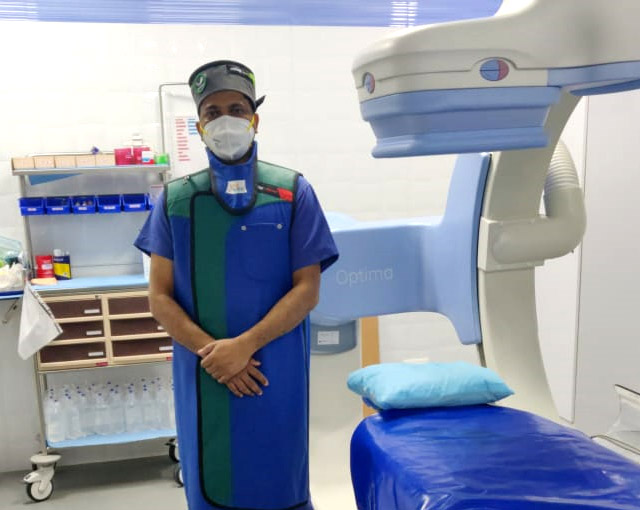 We perform Coronary Angioplasty to primarily treat a type of heart disease called Atherosclerosis, which is the slow build-up of fatty plaques in your heart’s blood vessels [coronary arteries]. Our process can treat symptoms of blocked arteries, such as chest pain and shortness of breath. It will be useful during a heart attack to quickly open a blocked artery and reduce the amount of damage to your heart. Bharath Clinic’s Coronary Angioplasty procedure will be used to treat the deposit of fatty plaques in your heart’s blood vessels. A step like this can save the lives of loved ones.
We perform Coronary Angioplasty to primarily treat a type of heart disease called Atherosclerosis, which is the slow build-up of fatty plaques in your heart’s blood vessels [coronary arteries]. Our process can treat symptoms of blocked arteries, such as chest pain and shortness of breath. It will be useful during a heart attack to quickly open a blocked artery and reduce the amount of damage to your heart. Bharath Clinic’s Coronary Angioplasty procedure will be used to treat the deposit of fatty plaques in your heart’s blood vessels. A step like this can save the lives of loved ones.
But Coronary Angioplasty isn’t for everyone. It will not be suitable for patients with weak heart muscles and/or multiple diseased heart blood vessels, among others. Hence, Bharath Clinic will assess your medical history and do a physical exam with an imaging test called a Coronary Angiogram to see if your blockages can be treated with angioplasty. This will determine if the arteries to your heart are narrowed or blocked. In a Coronary Angiogram, liquid dye is injected into the arteries of your heart through a catheter – a long, thin tube that is fed through an artery from your groin, arm, or wrist right up to the arteries in your heart. As the dye enters your arteries, they become visible on X-ray and video, so your doctor can see where your arteries are blocked.
This critical clinical decision is based on various criteria. In coronary artery bypass surgery, the blocked part of a patient’s artery is bypassed using a blood vessel from another part of your body. The judgment of angioplasty against bypass surgery will depend on the extent of the patient’s disease, the extent of blocks in the coronary arteries, and his/her overall medical condition.